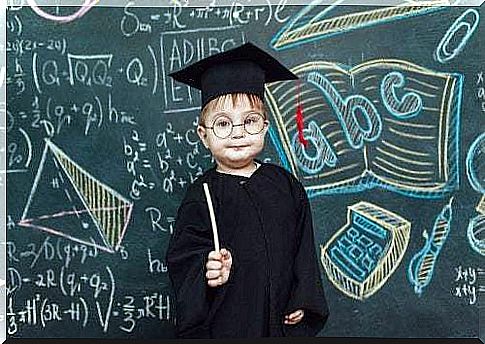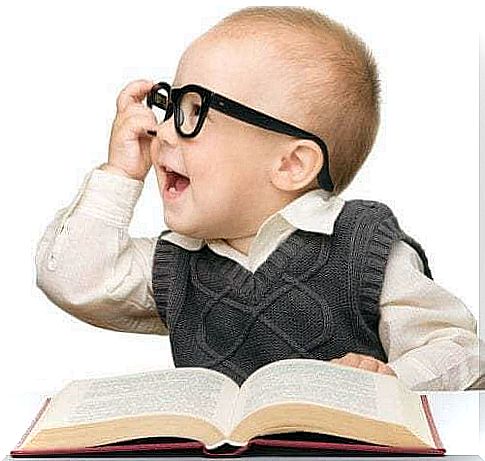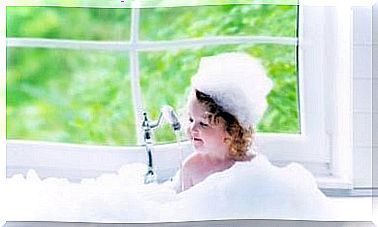Intelligence Test For Children: Here Are The Most Used

IQ is the unit of measurement of people’s general cognitive abilities, in relation to their age group. It is measured through intelligence tests for children or adults, depending on the needs.
To assess children’s intelligence, psychometric tests are often used. However, these tests are not enough. It will also be appropriate to carry out a thorough observation and maintain a personalized interview with the child. Let’s see together the tests to evaluate the intelligence of children.
– Alfred Binet –
The most common intelligence tests for children
TONI-2: a non-verbal test
It is a test that serves to measure cognitive ability based on the ability to solve problems with abstract figures. It lasts about 20 minutes and can be used on people between the ages of 5 and 85.
This test is ideal for assessing the intelligence of young children, as no language is required and great motor skills are not required. Furthermore, it can be performed in two equivalent modes, each consisting of 55 elements ordered by increasing difficulty. In any case, it will be advisable to carry out periodic evaluations and compare the results objectively.
In this test, the person evaluated must identify, in each figurative matrix that is presented to him, the relationship between the various abstract figures and seek the solution between the alternatives proposed.

Therefore, the examiner must give instructions by gestures or short verbal directions, such as: “ Which of these drawings should go here? “. In response, the person tested must indicate the corresponding response.
K-BIT: Kaufman intelligence test
It’s a pretty quick test to do. In fact, it only takes about 15 to 30 minutes to pass the test and is also easy to correct. This test is ideal for assessing children’s intelligence and can provide support and guidance for measuring intellectual capacity.
The K-BIT aims to assess verbal and non-verbal intelligence in people between the ages of 4 and 90. In a sense, it measures verbal skills related to school learning, based on knowledge of words and the formation of verbal concepts.
On the other hand, it values non-verbal skills and the ability to solve new problems based on the subject’s ability to perceive relationships and complete analogies. The K-BIT test consists of two different parts called sub-tests:
- Of vocabulary. With 45 voices of the expressive vocabulary and 37 voices on definitions.
- Of matrices. With 48 non-verbal elements characterized by both figurative (people or objects) and abstract (geometric shapes or symbols) visual stimuli.
This psychometric test provides three types of intellectual coefficients:
- Minutes.
- Non-verbal.
- Compound : total test performance.
WISC-V: Wechsler Intelligence Scale for Children
The WISC-V is used to measure the general thinking and reasoning skills of children and young people between the ages of 6 and 16. This test is based on a comprehensive approach to intelligence consisting of 10 main tests and 5 complementary tests, for the evaluation of different skills and abilities that contribute to the result of the total IQ.
Therefore, it consists of six main scores:
- Verbal understanding. It is measured with activities that require listening to questions and formulating verbal answers (test of similarities and vocabulary).
- Face-space. It is achieved with activities that require attention to detail and face-motor integration (cubes and visual puzzles).
- Fluid reasoning. It is assessed with tests that require the use of mental operations to tackle new tasks that cannot be performed automatically (matrices and scales).
- Working memory. It is assessed with activities that require learning and retaining information in memory while using the information learned to complete a task (figures and range of designs).
- Processing speed. It focuses on activities that require the quick examination of symbols and the decision on them (keys and search for symbols).
- Total scale. Sum of the scores in the 10 main tests. It defines the intellectual capacity of the child or adolescent with respect to his age group and based on his general thinking and reasoning skills.

The most effective test for assessing children’s intelligence
Among the tests to evaluate children’s intelligence, the most appropriate test is the WISC-V, because it is the one that provides the most complete and specific information on intellectual abilities.
This test allows to measure the total intelligence quotient which can be classified, according to the normal population distribution curve, as:
- Much higher: 130 or more.
- Upper: 120-129.
- Normal: 110-119.
- Medium: 90-109.
- Normal-low: 80-89.
- Low: 70-79.
- Very low: 69 or less.
Based on this score, it is also possible to detect intellectual deficiencies on various levels:
- Limit intellectual capacity: between 70 and 85.
- Mild: between 50 and 69.
- Moderate: between 35 and 49.
- Severe: between 20 and 34.
- Deep: less than 20.









